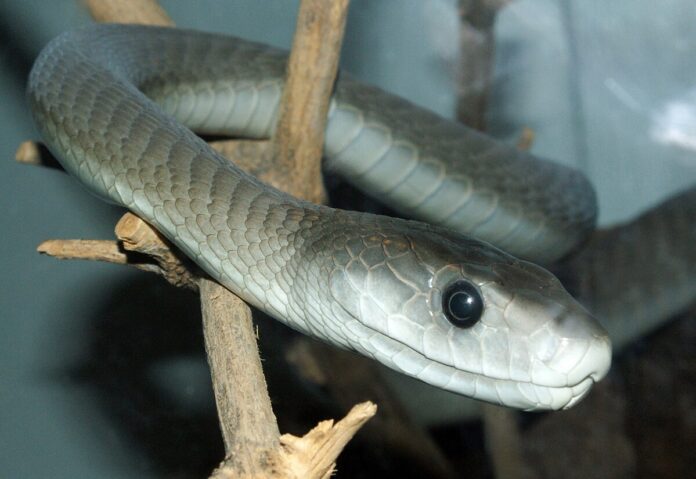From ancient times, humans have harbored an almost mystical fear of snakes, considering them embodiments of evil. These reptiles inhabit every continent except Antarctica, conquering forests, deserts, and aquatic environments. There are around 3,000 known species of these reptiles, of which only a fifth are venomous. Most of the terrifying serpents can be found only in tropical and equatorial countries.
When compiling the ranking of the most venomous snakes in the world, criteria such as:
- toxicity of the substances produced by the reptile’s glands
- typical behavior when encountering humans
- speed of movement
Black Mamba — an Inescapable Threat
This snake is found in African savannas and sparse forests, and it not only crawls on the ground but also climbs trees. Large specimens of this species can reach 3 meters in length and weigh up to 1.6 kg. The interior of its mouth cavity is colored in intense black and resembles a coffin in shape, hence the name of the animal. The color of the scales is olive or grayish-brown.
The black mamba is the fastest snake in the world; it can reach speeds of up to 20 km/h over short distances, so a person pursued by it is practically doomed, unless, of course, they are Usain Bolt. The snake is highly aggressive and often attacks without any provocation. Its venom contains neurotoxins, and if an antidote is not administered promptly, paralysis and respiratory arrest occur. Without antivenom serum, the chances of survival after an attack by the reptile are less than 2%, and if the bite is delivered into a major blood vessel, there is almost no hope of saving the victim even with the medicine.
The black mamba feeds on rodents, bats, and other small mammals, as well as birds.
Russell’s Viper (chain viper) — There’s No Escaping
Habitat: South and Southeast Asia. This extremely dangerous reptile has killed more people than any other snake. Named after the Scottish naturalist Patrick Russell, who studied it. It preys on rats and mice, so it regularly crosses the line into populated areas.
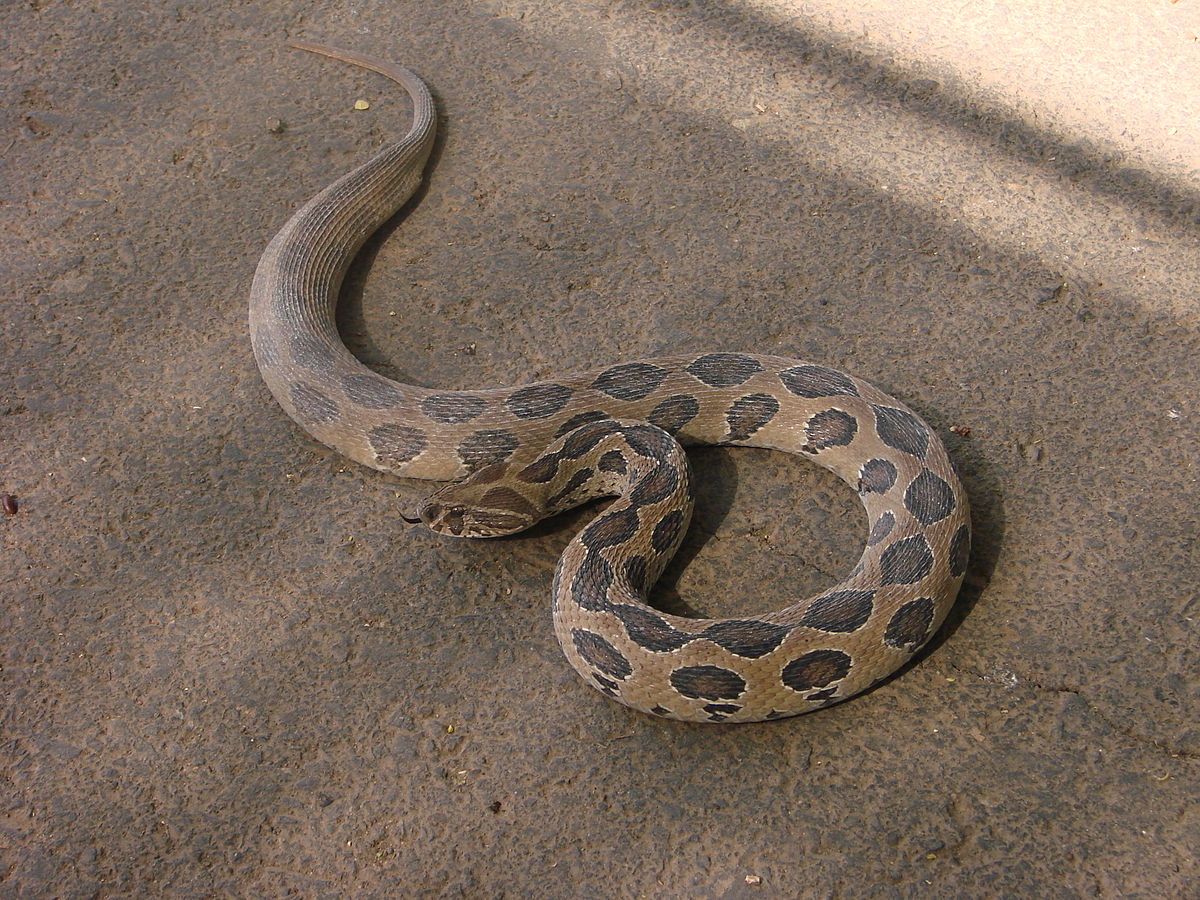
The average length of the snake is 120 cm, and its color ranges from dark to grayish-brown. The head has a pronounced triangular shape. The back is covered with large black or brown oval spots.
Overall, the viper behaves quite lazily, but if frightened or accidentally disturbed, the creature swiftly launches into an attack, with its body completely detaching from the surface, assuming a vertical combat stance. The snake bites into exposed areas of the body with its teeth.
The venom is so concentrated that it destroys cells and erythrocytes. As a result of a bite, 120-270 mg of toxins enter the bloodstream, with 50 mg being a lethal dose for humans. Within a couple of hours, necrosis of the limb develops, and internal organs are affected. Even administering an antidote does not guarantee full recovery.
King Cobra – Spectacled Serpent
This bloodthirsty reptile, like most of its relatives, originates from South and Southeast Asia, where it prefers to inhabit tropical forests. But as their habitat diminishes, king cobras are increasingly encountering humans. The serpent is considered the largest venomous snake in the world, with individual specimens exceeding 5.6 meters in length.
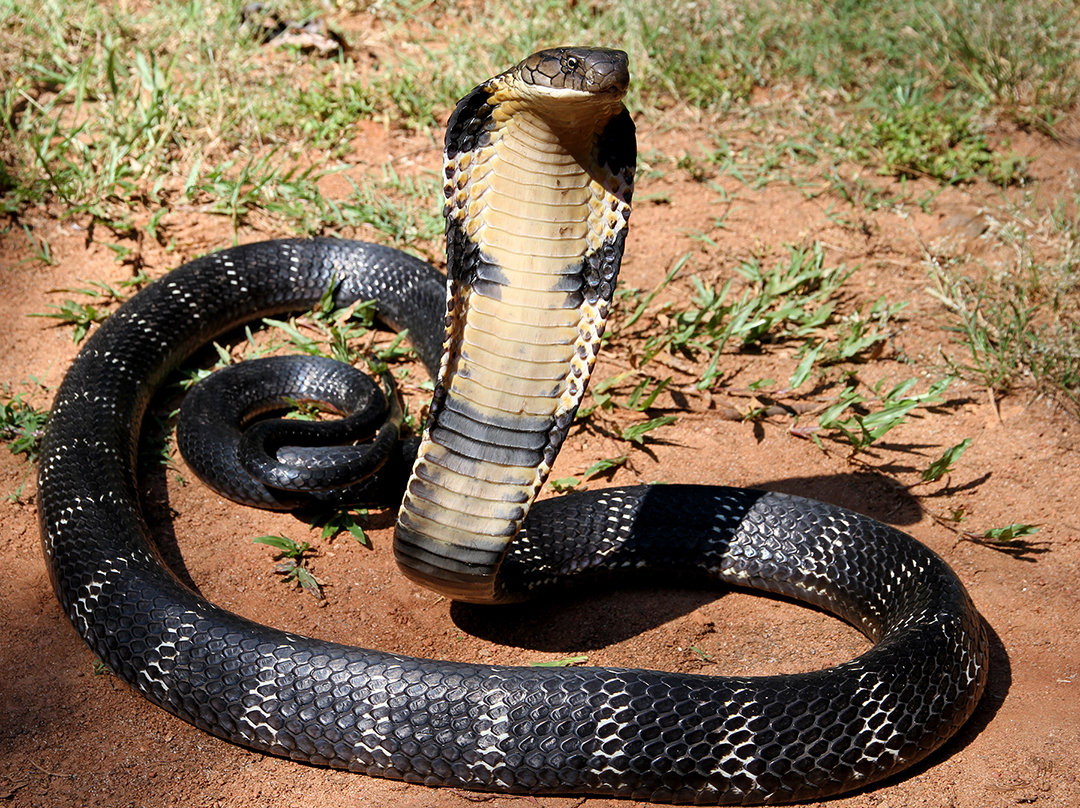
The monster’s back is colored in yellow, brown, black, or green, depending on the region of residence, while its underside is cream-beige. The king cobra can spread its chest ribs in such a way that a unique hood appears in the upper part of its body. When angered, it emits hissing sounds.
The reptile hunts its own kind, and its Latin name “Ophiophagus hannah” translates to “snake-eater.” Quite often, the prey of the animal becomes other reptiles that it tracks down itself.
In repelling humans, the king cobra does not always use venom; it may simply bite the victim without any significant consequences, which is the case in most instances. If toxins do enter the bloodstream, death due to respiratory muscle paralysis occurs within 15 minutes.
When encountering a king cobra, it is recommended not to make sudden movements. If the snake realizes that the object is not a threat, it will simply slither away. The reptile is quite agile: it swims well and moves on land at speeds of up to 6 km/h.
Sand Viper – Mistress of the Deserts
A member of the viper family measuring no more than 60-80 cm has settled in vast territories from the northwestern regions of Africa to the arid natural zones of India and Pakistan, as well as some Central Asian countries.
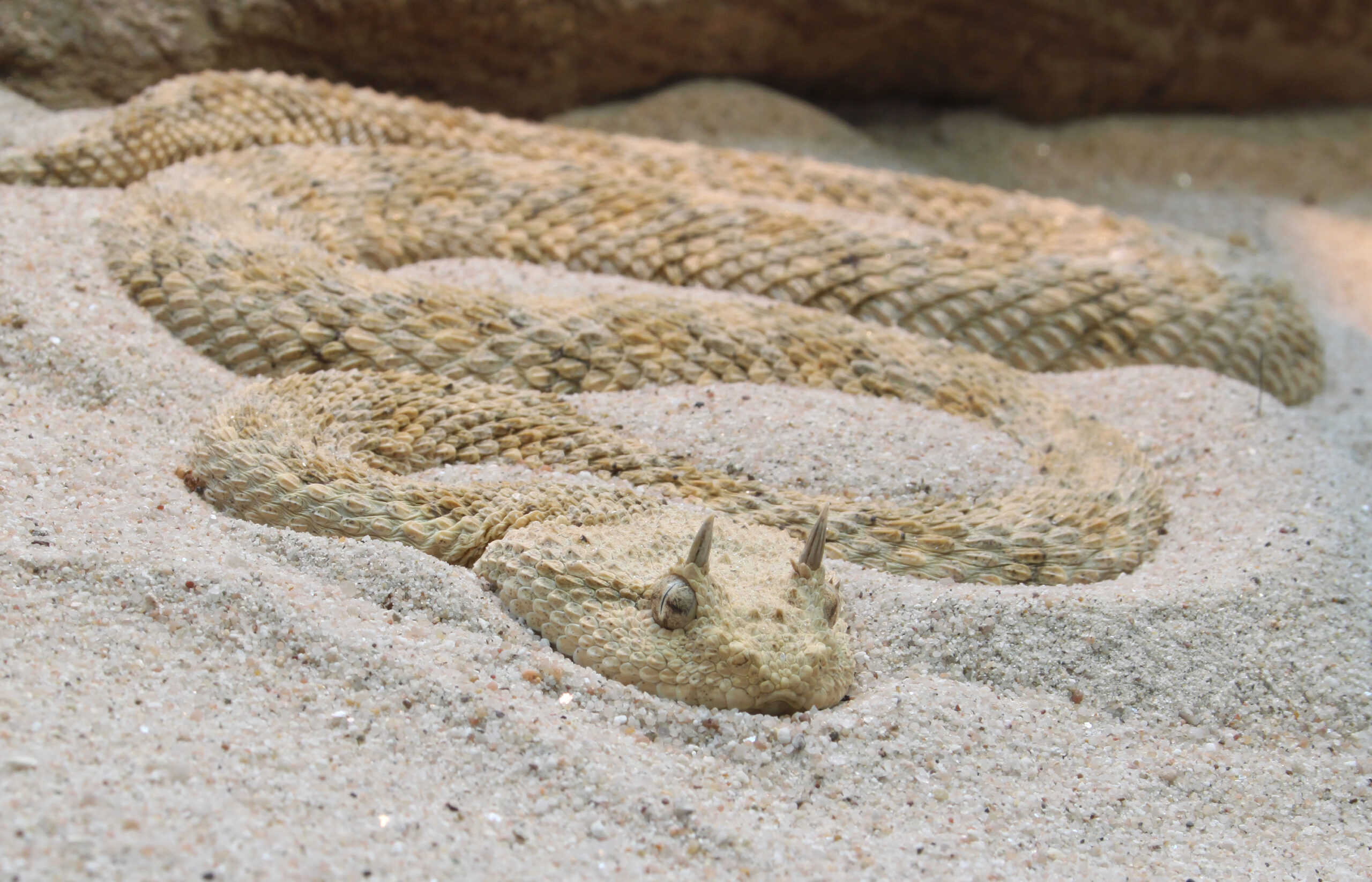
The reptile’s body is covered with small grayish-sandy scales, some of which are oriented in the opposite direction, causing the moving viper to emit a characteristic rustling sound. Zigzag lines are located on the sides of the body, and the head has a light spot resembling a cross.
Agile and aggressive, the snake hunts lizards, rodents, small birds, but when protecting its offspring, it swiftly attacks any opponent, even one much larger than itself. In a matter of seconds, the reptile can jump in length by 3 meters and in height by a whole meter.
Statistically, every sixth person bitten by the reptile dies. The venom affects the blood composition, causing profuse subcutaneous hemorrhages, shortness of breath, heart, and muscle pains. The victim urgently needs to be injected with a polyvalent antivenom serum; otherwise, death may occur within a few hours.
Taipan – Synonymous with Danger
An Australian snake measuring up to 3 meters is considered the most venomous on land. The large animal has a uniform body color, light or dark brown with reddish hues. The belly is yellow or white.
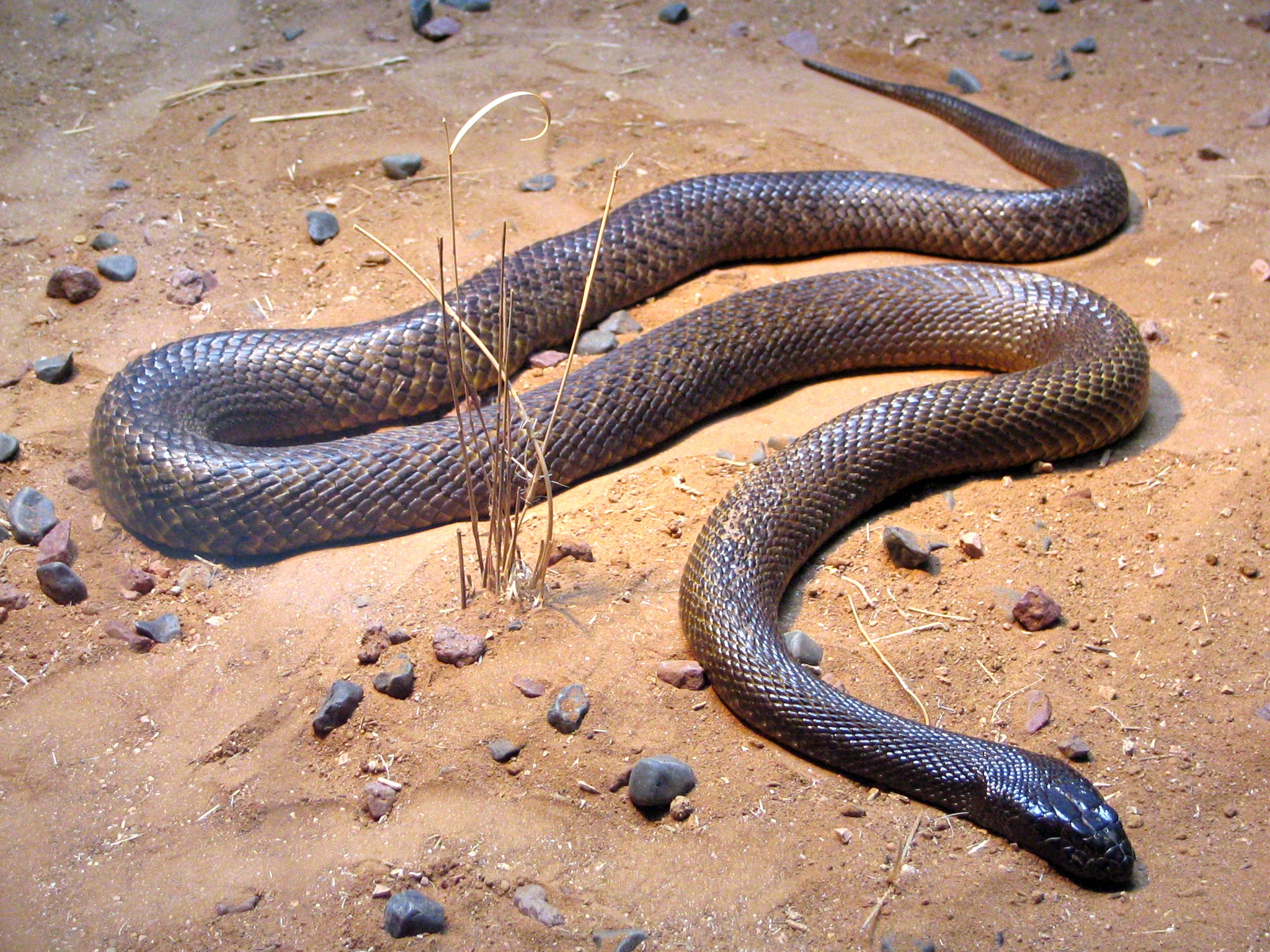
Its main food source is rodents and frogs. While pursuing prey, the taipan reaches speeds of up to 19 km/h.
The snake’s venom is 50 times stronger than that of a cobra and 10 times stronger than that of a rattlesnake. Until antivenom was developed, the mortality rate from the snakebite approached 100%, and even now, the chances of a victim recovering are 50/50. Without the antidote, an adult human will die within 45 minutes. The toxins disrupt blood clotting, leading to respiratory failure.
The taipan does not attack unless provoked and rarely encounters humans. There are three species of these snakes, the last of which was discovered in 2007
